
Rio Dulce: Guatemala’s Hidden Gem
Discover Rio Dulce, Guatemala’s hidden gem, where lush landscapes, historic forts, and vibrant cultures converge along a stunning river paradise.
Rio Dulce, located in the heart of Guatemala, is a hidden gem that offers a unique blend of natural beauty, rich history, and vibrant culture. Nestled between Lake Izabal and the Caribbean Sea, this river town is a paradise for nature lovers and adventure seekers alike. The lush tropical surroundings, crystal-clear waters, and abundant wildlife make it a perfect destination for those looking to escape the hustle and bustle of city life. One of the main attractions in Rio Dulce is the Castillo de San Felipe, a historic Spanish fort built in the 17th century to protect the region from pirate attacks. This well-preserved fortress offers stunning views of the river and the surrounding landscape. Another must-see is the Rio Dulce National Park, which is home to a diverse array of flora and fauna, including howler monkeys, toucans, and manatees. Visitors can explore the park by boat or on foot, taking in the breathtaking scenery along the way. For those interested in experiencing the local culture, the town of Livingston, located at the mouth of the Rio Dulce, is a vibrant community with a unique blend of Garifuna, Maya, and Ladino cultures. Here, you can enjoy traditional music, dance, and cuisine, as well as visit local markets and artisan shops. Whether you're looking to relax on the river, explore ancient ruins, or immerse yourself in local traditions, Rio Dulce has something for everyone.
Local tips in Rio Dulce
- Hire a local guide for a boat tour to fully appreciate the beauty and history of Rio Dulce.
- Visit Castillo de San Felipe early in the morning to avoid crowds and enjoy a peaceful experience.
- Bring insect repellent, as the area is rich in tropical forests and wildlife.
- Try the local Garifuna dish called 'Tapado', a delicious seafood stew cooked in coconut milk.
- Pack light, breathable clothing suitable for the tropical climate.
Rio Dulce: Guatemala’s Hidden Gem
Rio Dulce, located in the heart of Guatemala, is a hidden gem that offers a unique blend of natural beauty, rich history, and vibrant culture. Nestled between Lake Izabal and the Caribbean Sea, this river town is a paradise for nature lovers and adventure seekers alike. The lush tropical surroundings, crystal-clear waters, and abundant wildlife make it a perfect destination for those looking to escape the hustle and bustle of city life. One of the main attractions in Rio Dulce is the Castillo de San Felipe, a historic Spanish fort built in the 17th century to protect the region from pirate attacks. This well-preserved fortress offers stunning views of the river and the surrounding landscape. Another must-see is the Rio Dulce National Park, which is home to a diverse array of flora and fauna, including howler monkeys, toucans, and manatees. Visitors can explore the park by boat or on foot, taking in the breathtaking scenery along the way. For those interested in experiencing the local culture, the town of Livingston, located at the mouth of the Rio Dulce, is a vibrant community with a unique blend of Garifuna, Maya, and Ladino cultures. Here, you can enjoy traditional music, dance, and cuisine, as well as visit local markets and artisan shops. Whether you're looking to relax on the river, explore ancient ruins, or immerse yourself in local traditions, Rio Dulce has something for everyone.
When is the best time to go to Rio Dulce?
Iconic landmarks you can’t miss
Castillo de San Felipe de Lara
Explore the enchanting Castillo de San Felipe de Lara, a historical castle in Guatemala offering breathtaking views, rich heritage, and captivating stories.
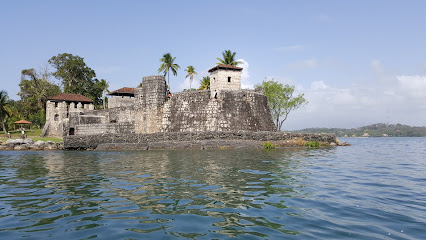
Puente de Río Dulce
Explore the breathtaking Puente de Río Dulce, where stunning views meet nature's tranquility in Guatemala's lush landscapes.

Hacienda Tijax Hotel y Marina
Discover tranquility at Hacienda Tijax Hotel y Marina, where nature meets luxury in the stunning Rio Dulce region of Guatemala.

Hotel Mansion del Rio
Discover tranquility and comfort at Hotel Mansion del Rio, a serene getaway in the heart of Guatemala's stunning landscapes.

Nanajuana Río Dulce
Discover the natural beauty and serene luxury of Nanajuana Río Dulce, a premier resort hotel in Guatemala's stunning landscape.

Supermercado La Torre Río Dulce Izabal
Experience local culture and vibrant shopping at Supermercado La Torre in Rio Dulce, a must-visit destination for every traveler.

Nacional Rio Dulce National Park
Explore the enchanting beauty of Nacional Rio Dulce National Park, a sanctuary of lush rainforest and vibrant wildlife in Guatemala.
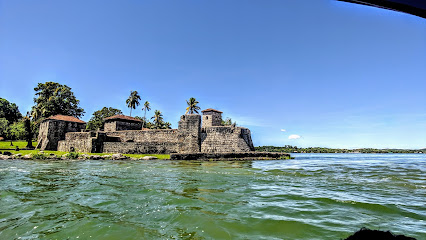
Tortugal Boutique River Lodge & Marina
Experience the enchanting beauty of Rio Dulce at Tortugal Boutique River Lodge & Marina, where adventure meets tranquility in a stunning natural setting.

Siete Altares
Experience the serene beauty of Siete Altares, a hidden gem in Guatemala with breathtaking waterfalls and crystal-clear natural pools.

Hotel Kangaroo
Experience the magic of Guatemala at Hotel Kangaroo, a unique riverside hotel with stunning views, local cuisine, and adventure at your doorstep.

Boatique Hotel and Marina, Rio Dulce Guatemala
Discover a tranquil retreat at Boatique Hotel and Marina in Rio Dulce, Guatemala, featuring unique straw-roofed accommodations and stunning river views.

Hotel Casa Perico
Discover tranquility and adventure at Hotel Casa Perico, your perfect retreat along the stunning Rio Dulce in Guatemala.

'The Shack' Hostel
Experience the vibrant ambiance of The Shack Hostel by the Rio Dulce, where adventure meets relaxation in a stunning natural setting.

Tenamit Maya
Experience the charm of Tenamit Maya, an ecological park and hotel in Livingston, Izabal, blending nature, culture, and relaxation for every traveler.

Hotelito Perdido
Experience the tranquility of Hotelito Perdido, an eco-friendly hotel on the banks of Rio Dulce, perfect for nature lovers and adventure seekers.
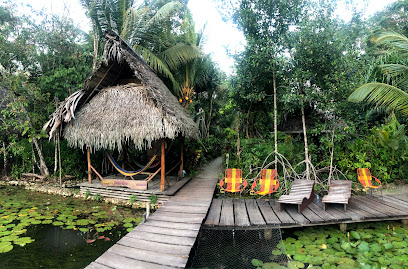
Unmissable attractions to see
Semuc Champey
Explore the stunning turquoise pools and lush landscapes of Semuc Champey, a natural paradise in Guatemala that promises unforgettable adventures and breathtaking scenery.

Castillo de San Felipe de Lara
Explore the historical Castillo de San Felipe de Lara, a stunning 16th-century fortress offering breathtaking views and a glimpse into Guatemala's vibrant history.
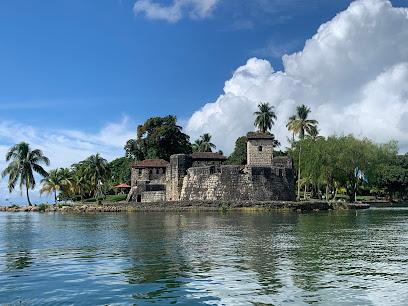
Dino Park
Explore the prehistoric wonders of Dino Park in Santa Cruz Muluá, Guatemala, where fun, adventure, and learning meet in a dino-themed paradise.
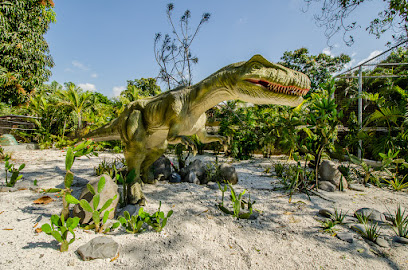
Mirador de Juan Dieguez Olaverri
Experience the stunning panoramic views and natural beauty at Mirador de Juan Dieguez Olaverri, a must-see viewpoint in Guatemala.

Muelle Municipal
Experience the vibrant Garifuna culture at Muelle Municipal, where the waterfront comes alive with local flavors and traditions in Puerto Barrios.

Hun Nal Ye
Explore the magical landscapes and rich cultural heritage of Hun Nal Ye, a must-visit tourist attraction in Chicuxub, Guatemala.

Playa Blanca
Experience the tranquil beauty of Playa Blanca, a top tourist destination in Guatemala known for its stunning beaches and vibrant marine life.

Parque Nacional Grutas de Lanquín
Explore the stunning limestone caves and lush landscapes of Parque Nacional Grutas de Lanquín, a national park rich in biodiversity and adventure.

Siete Altares
Discover the breathtaking beauty of Siete Altares, a hidden gem in Guatemala with stunning waterfalls and serene swimming pools.
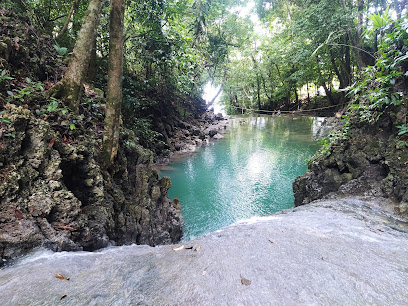
Punta de Palma
Explore Punta de Palma's stunning beaches and vibrant marine life in Puerto Barrios, Guatemala's tranquil coastal paradise.

Cenotes de Candelaria
Explore the natural wonders of Cenotes de Candelaria, Guatemala's breathtaking sinkholes perfect for swimming and relaxation amidst lush landscapes.

Río Sachichá Villa Ecológica
Explore the adventures of Río Sachichá Villa Ecológica, a perfect blend of nature, fun, and relaxation in Guatemala's stunning landscapes.

Waterfalls Tatasirire
Experience the stunning beauty of Waterfalls Tatasirire, an ecological paradise in Miramundo, where nature and adventure await.
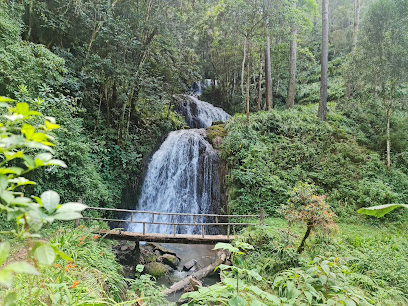
Tuqtuquilal Regenerative Center - Cacao Tours - Lunch - Cabañas
Explore eco-tourism and chocolate artistry at Tuqtuquilal Regenerative Center, a haven for nature lovers and culinary enthusiasts in Guatemala.

Parque Nacional Río Dulce
Experience the natural beauty and adventure of Parque Nacional Río Dulce, a stunning national park in Guatemala, perfect for nature lovers and explorers.

Essential places to dine
Restaurante Ranchon Mary
Experience authentic Guatemalan cuisine at Restaurante Ranchon Mary while enjoying stunning views along Río Dulce.

Sundog Cafe, Rio Dulce
Discover culinary bliss at Sundog Cafe in Rio Dulce – where fresh pizza meets stunning views and welcoming vibes.

Restaurante El Viajero
Discover the rich flavors of Guatemala at Restaurante El Viajero in Río Dulce - where every meal tells a story.

Hotel y Restaurante Jocelyn
Discover the charm of Hotel y Restaurante Jocelyn - where exquisite cuisine meets breathtaking views along the enchanting Río Dulce.
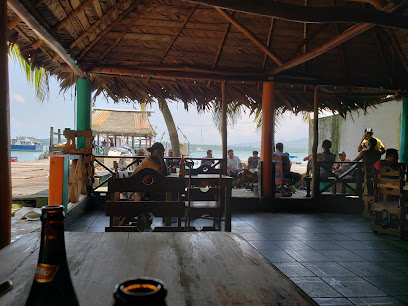
Restaurante Delicias del Rio
Experience authentic Guatemalan cuisine at Restaurante Delicias del Rio while enjoying stunning views of Río Dulce's natural beauty.

Restaurante Karlitas
Experience authentic Guatemalan cuisine at Restaurante Karlitas in beautiful Río Dulce.

Colifato
Savor delicious fast food at Colifato in Rio Dulce - where local flavors meet quick bites in a vibrant atmosphere.

Restaurante Zuly
Discover authentic Guatemalan flavors at Restaurante Zuly in beautiful Río Dulce - where great food meets stunning views.

Ana's Coffee House/Marina Hacha
Experience authentic Greek cuisine amidst breathtaking views at Ana's Coffee House in beautiful Río Dulce.

Churrasqueria Chusin
Experience the vibrant flavors of Guatemala at Churrasqueria Chusin - where grilling meets tradition in scenic Río Dulce.

Rancho El Centenario Restaurant y Piscinas
Experience the flavors of Guatemala at Rancho El Centenario Restaurant y Piscinas, where culinary delight meets breathtaking views by Río Dulce.
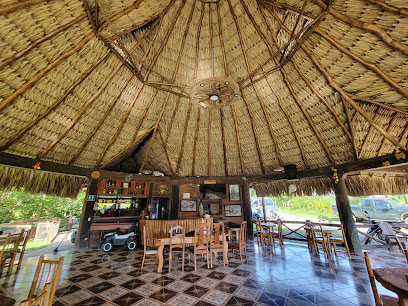
Cayena Restaurante
Discover authentic Guatemalan cuisine with stunning river views at Cayena Restaurante in Río Dulce.

El Manglar
Experience authentic Guatemalan flavors at El Manglar, where delightful dishes meet stunning views along Río Dulce.

Ay Wey
Experience the rich flavors of Mexico at Ay Wey in Río Dulce, where every dish tells a story of culinary tradition and passion.

Restaurante Mamá Moncha
Experience the vibrant flavors of Guatemala at Restaurante Mamá Moncha in Río Dulce—perfect for families seeking delicious meals amidst nature.

Markets, malls and hidden boutiques
Puente de Río Dulce
Discover the beauty of Guatemala at Puente de Río Dulce, a stunning bridge offering breathtaking views and a gateway to adventure.

Supermercado La Torre Río Dulce Izabal
Experience the vibrant shopping scene and local flavors at Supermercado La Torre in Río Dulce, Guatemala, a must-visit for all tourists.

Tortugal Boutique River Lodge & Marina
Discover the beauty of Tortugal Boutique River Lodge & Marina, where luxury meets nature in the heart of National Park Rio Dulce.

MD Rio Dulce
Discover the best shopping and dining at MD Rio Dulce, a vibrant mall offering a taste of local culture and international flair.

Boatique Hotel and Marina, Rio Dulce Guatemala
Discover the beauty of Rio Dulce at Boatique Hotel and Marina, where unique accommodations meet stunning natural landscapes.

Despensa Familiar
Explore Despensa Familiar in Río Dulce for a diverse range of local and international products in a vibrant and friendly shopping environment.

RAM Marina & Yacht Club, S.A.
Discover RAM Marina & Yacht Club, a boating paradise in Río Dulce with exceptional services, stunning views, and a friendly atmosphere for all water enthusiasts.

Rio dulce izabal
Explore the breathtaking landscapes and rich culture of Rio Dulce Izabal, Guatemala's hidden treasure for nature and adventure enthusiasts.

Dismar
Explore the best fishing gear and local expertise at Dismar in Río Dulce, the ultimate destination for fishing enthusiasts.

Coworkafe & Coworkantina
Experience the perfect blend of vibrant Mexican cuisine and a productive coworking space at Coworkafe & Coworkantina in Río Dulce.

Comercial paseo del Rio
Discover unique shopping and dining experiences at Comercial Paseo del Rio in the beautiful Río Dulce region of Guatemala.

Antojitos La Gondola
Discover the vibrant flavors of Guatemala at Antojitos La Gondola, a cozy coffee shop in Río Dulce offering delightful local treats.
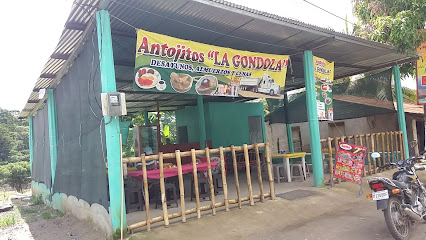
Super Mayen Rio Dulce
Explore Super Mayen Rio Dulce, a local construction wholesaler that showcases the vibrant craftsmanship and materials of Guatemala.

Parador Del Rio
Discover vibrant shopping, local crafts, and culinary delights at Parador Del Rio in beautiful Río Dulce, Guatemala.

MegaPaca
Explore MegaPaca in Río Dulce for unique second-hand finds and an authentic taste of local culture.

Essential bars & hidden hideouts
Restaurante Ranchon Mary
Experience the authentic taste of Guatemala at Restaurante Ranchon Mary, where local flavors meet stunning riverside views.

Sundog Cafe, Rio Dulce
Discover the flavors of Sundog Cafe in Rio Dulce, a pizza paradise amidst breathtaking landscapes and warm hospitality.

Hotel y Restaurante Backpackers
Explore the beauty of Río Dulce at Hotel y Restaurante Backpackers, a perfect blend of comfort, cuisine, and local culture.

Hotel Kangaroo
Experience the vibrant culture and stunning landscapes of Guatemala at Hotel Kangaroo, where comfort meets adventure in Rio Dulce.

Restaurante El Viajero
Experience authentic Guatemalan cuisine with breathtaking views at Restaurante El Viajero in Río Dulce, a culinary gem for tourists.

Hotel y Restaurante Jocelyn
Discover serene riverside dining and comfortable accommodations at Hotel y Restaurante Jocelyn, a perfect spot for relaxation and local flavors.

Hotel Catamaran
Experience the perfect blend of comfort and nature at Hotel Catamaran, your serene escape on the enchanting shores of Río Dulce.

'The Shack' Hostel
Experience the vibrant culture and scenic beauty of Rio Dulce at 'The Shack' Hostel, where adventure meets relaxation.
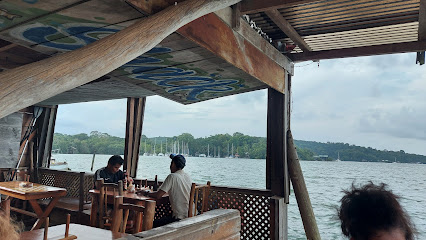
Mar Marine Yacht Club
Experience unparalleled luxury and adventure at Mar Marine Yacht Club, the ultimate destination for relaxation and exploration in Rio Dulce, Guatemala.

Ana's Coffee House/Marina Hacha
Savor authentic Greek cuisine in the heart of Río Dulce at Ana's Coffee House, where flavorful dishes meet stunning views.

Coworkafe & Coworkantina
Experience the perfect blend of delicious Mexican cuisine and a productive coworking space at Coworkafe & Coworkantina in Río Dulce.

La Terraza Snack&Bar
Experience the vibrant atmosphere and delicious drinks at La Terraza Snack & Bar in San Felipe de Lara, a perfect retreat for tourists.

Restaurante y Discoteca Los Pinchos
Discover the vibrant flavors and enchanting nightlife at Restaurante y Discoteca Los Pinchos in Lívingston, Guatemala.
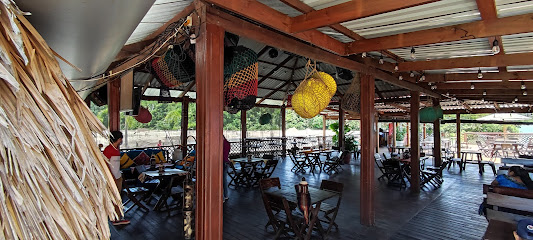
Bar Beluba Neruba
Experience the vibrant nightlife of Livingston at Bar Beluba Neruba, where local culture meets a lively atmosphere.

sabor latino
Discover the essence of Latin American cuisine at Sabor Latino in Río Dulce, where vibrant flavors meet a warm and inviting atmosphere.

Local Phrases
-
- HelloHola
[oh-lah] - GoodbyeAdiós
[ah-dee-ohs] - YesSí
[see] - NoNo
[noh] - Please/You're welcomePor favor/De nada
[por fah-vohr/deh nah-dah] - Thank youGracias
[grah-see-ahs] - Excuse me/SorryDisculpe/Perdón
[dees-kool-peh/pehr-dohn] - How are you?¿Cómo estás?
[koh-moh ehs-tahs] - Fine. And you?Bien. ¿Y tú?
[byen. ee too] - Do you speak English?¿Hablas inglés?
[ah-blahs een-glehs] - I don't understandNo entiendo
[noh ehn-tyehn-doh]
- HelloHola
-
- I'd like to see the menu, pleaseMe gustaría ver el menú, por favor
[meh goos-tah-ree-ah behr ehl meh-noo, por fah-vohr] - I don't eat meatNo como carne
[noh koh-moh kahr-neh] - Cheers!¡Salud!
[sah-loohd] - I would like to pay, pleaseMe gustaría pagar, por favor
[meh goos-tah-ree-ah pah-gahr, por fah-vohr]
- I'd like to see the menu, pleaseMe gustaría ver el menú, por favor
-
- Help!¡Ayuda!
[ah-yoo-dah] - Go away!¡Vete!
[veh-teh] - Call the Police!¡Llama a la Policía!
[yah-mah ah lah poh-lee-see-ah] - Call a doctor!¡Llama a un doctor!
[yah-mah ah oon dohk-tohr] - I'm lostEstoy perdido
[ehs-toy pehr-dee-doh] - I'm illEstoy enfermo
[ehs-toy ehn-fehr-moh]
- Help!¡Ayuda!
-
- I'd like to buy...Me gustaría comprar...
[meh goos-tah-ree-ah kohm-prahr...] - I'm just lookingSolo estoy mirando
[soh-loh ehs-toy meer-ahn-doh] - How much is it?¿Cuánto cuesta?
[kwan-toh kwehs-tah] - That's too expensiveEso es muy caro
[eh-soh ehs mwee kah-roh] - Can you lower the price?¿Puedes bajar el precio?
[pweh-dehs bah-hahr ehl pree-syoh]
- I'd like to buy...Me gustaría comprar...
-
- What time is it?¿Qué hora es?
[keh oh-rah ehs] - It's one o'clockEs la una
[ehs lah oo-nah] - Half past (10)Media (10)
[meh-dee-ah (deez)] - MorningMañana
[mah-nyah-nah] - AfternoonTarde
[tahr-deh] - EveningNoche
[noh-cheh] - YesterdayAyer
[ah-yehr] - TodayHoy
[oy] - TomorrowMañana
[mah-nyah-nah] - 1Uno
[oo-noh] - 2Dos
[dohs] - 3Tres
[trehs] - 4Cuatro
[kwah-troh] - 5Cinco
[seen-koh] - 6Seis
[seys] - 7Siete
[syeh-teh] - 8Ocho
[oh-choh] - 9Nueve
[nweh-veh] - 10Diez
[dyehs]
- What time is it?¿Qué hora es?
-
- Where's a/the...?¿Dónde está...?
[dohn-deh ehs-tah] - What's the address?¿Cuál es la dirección?
[kwahl ehs lah dee-rehk-syohn] - Can you show me (on the map)?¿Puedes mostrarme (en el mapa)?
[pweh-dehs mohs-trar-meh (ehn ehl mah-pah)] - When's the next (bus)?¿Cuándo es el próximo (autobús)?
[kwan-doh ehs ehl proh-ksee-moh (ow-toh-boos)] - A ticket (to ....)Un boleto (a ....)
[oon boh-leh-toh (ah ....)]
- Where's a/the...?¿Dónde está...?
History of Rio Dulce
-
Rio Dulce, a river that runs from Lake Izabal to the Caribbean Sea, was once a crucial part of the ancient Maya trade routes. The Maya civilization, which flourished from approximately 2000 BC to the arrival of the Spanish in the early 16th century, used Rio Dulce for transporting goods such as jade, cacao, and quetzal feathers. The nearby town of Quiriguá, known for its impressive stone monuments and stelae, was an important Maya city that benefited from its proximity to the river.
-
During the 16th century, Spanish conquistadors arrived in the region, leading to the eventual fall of the Maya civilization. The Spanish recognized the strategic importance of Rio Dulce and established the Castillo de San Felipe de Lara in 1652 to protect their interests against British pirates who frequently raided Spanish settlements and ships. The fort, located at the narrowest point of the river, became a crucial defensive structure during the colonial period.
-
Following Guatemala's independence from Spain in 1821, Rio Dulce continued to serve as an important transportation route. The river facilitated the movement of goods and people between the Caribbean coast and the interior of the country. The region around Rio Dulce saw the development of agriculture, particularly the cultivation of bananas and coffee, which were key export commodities for the newly independent nation.
-
In the 20th century, Rio Dulce became a focal point for infrastructure projects aimed at boosting economic development. The construction of the Frontera Bridge in the 1950s connected the eastern departments of Guatemala with the rest of the country, significantly improving transportation and trade. The establishment of the Rio Dulce National Park in 1955 helped to preserve the area's rich biodiversity and promote eco-tourism, attracting visitors from around the world.
-
Today, Rio Dulce is a vibrant hub for tourism and a popular destination for sailors and adventurers. The river's lush tropical surroundings, diverse wildlife, and historical landmarks such as Castillo de San Felipe de Lara make it a unique blend of natural beauty and cultural heritage. The local Garifuna and Q’eqchi’ Maya communities contribute to the rich cultural tapestry of the region, sharing their traditions, music, and cuisine with visitors.
Rio Dulce Essentials
-
Rio Dulce is located in the Izabal department of Guatemala. The nearest major airport is La Aurora International Airport in Guatemala City, approximately 260 kilometers away. From Guatemala City, you can take a shuttle service, private car, or public bus to Rio Dulce. The journey typically takes around 5 to 6 hours by road. Another option is to fly to Puerto Barrios or Flores and then take a bus or taxi to Rio Dulce.
-
In Rio Dulce, local transportation options include taxis, tuk-tuks, and boats. Tuk-tuks are a popular and affordable way to get around town. For exploring the river and nearby attractions, boats are readily available for hire. Public buses and minibuses (colectivos) connect Rio Dulce to other towns and cities in the region. Renting a car is also an option, but driving conditions can be challenging.
-
The official currency in Guatemala is the Guatemalan Quetzal (GTQ). Credit cards are accepted in some hotels, restaurants, and shops, but it is advisable to carry cash, especially in smaller establishments and rural areas. ATMs are available in Rio Dulce, but it is wise to withdraw sufficient cash in larger cities like Guatemala City or Flores before traveling to ensure you have enough funds.
-
Rio Dulce is generally a safe destination for tourists, but it is advisable to take standard precautions. Avoid walking alone at night in unfamiliar areas and keep an eye on your belongings in crowded places. Areas with higher crime rates targeting tourists include the bus terminal and some isolated parts of the river. Always stay vigilant and aware of your surroundings.
-
In case of emergency, dial 110 for police assistance and 122 or 123 for medical emergencies. The nearest hospital is in Morales, about 30 minutes away by car. It is recommended to have travel insurance that covers medical emergencies. For minor health issues, there are pharmacies in Rio Dulce where you can purchase over-the-counter medications.
-
Fashion: Do dress modestly, especially when visiting local communities and religious sites. Avoid wearing revealing clothing. Religion: Do respect local customs and traditions. Always ask for permission before taking photos of people and religious ceremonies. Public Transport: Do be respectful and courteous to fellow passengers. Don't eat or drink on public transport. Greetings: Do greet people with a handshake or a friendly 'Hola'. A smile goes a long way. Eating & Drinking: Do try local delicacies and accept food offerings graciously. Don't refuse hospitality, as it is considered impolite.
-
To experience Rio Dulce like a local, visit the local markets where you can buy fresh produce and traditional Guatemalan goods. Engage with locals, as they are often friendly and willing to share stories about the area's history and culture. Don't miss visiting the Castillo de San Felipe, a historic Spanish colonial fort. For a unique experience, take a boat tour to Livingston, a town with a rich Garifuna culture. Exploring the Rio Dulce Canyon by boat is also highly recommended for its stunning natural beauty.
Trending Landmark in Rio Dulce
-
Castillo de San Felipe de Lara
-
Puente de Río Dulce
-
Hacienda Tijax Hotel y Marina
-
Hotel Mansion del Rio
-
Nanajuana Río Dulce
-
Supermercado La Torre Río Dulce Izabal
-
Nacional Rio Dulce National Park
-
Tortugal Boutique River Lodge & Marina
-
Siete Altares
-
Hotel Kangaroo
-
Boatique Hotel and Marina, Rio Dulce Guatemala
-
Hotel Casa Perico
-
'The Shack' Hostel
-
Tenamit Maya
-
Hotelito Perdido
Nearby Cities to Rio Dulce
-
Things To Do in Livingston
-
Things To Do in Puerto Barrios
-
Things To Do in Punta Gorda
-
Things To Do in San Pedro Sula
-
Things To Do in Copán Ruinas
-
Things To Do in Puerto Cortés
-
Things To Do in Santa Rosa de Copán
-
Things To Do in Placencia
-
Things To Do in Gracias
-
Things To Do in Hopkins
-
Things To Do in Dangriga
-
Things To Do in San Ignacio
-
Things To Do in Flores
-
Things To Do in Tikal
-
Things To Do in Suchitoto










